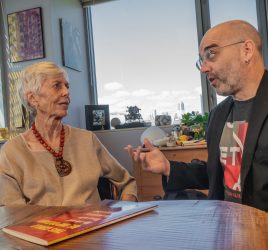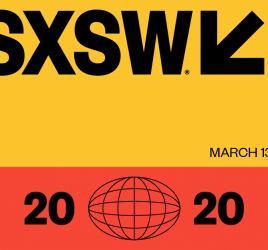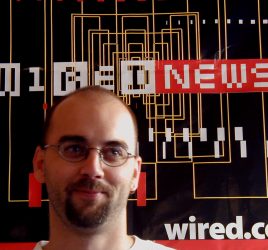Why The People Who Hate on SXSW Interactive Suck
ED Note: I exchanged a few comments and Tweets with Jolie earlier today. She was surprised by the spirited response to her blog post (from the blogosphere; not from me). Our conversation confirmed what I thought: she’s a decent gal. She just waded, unintentionally, into the annual post-SXSW Interactive reaction debate. For all of you out there who have a burning desire to be a hater-hater, please I’d like to offer the paraphrased advice from my favorite judge in California: all parties are advised to chill.
South by Southwest Interactive is over, and with that brings out the annual “Why I Hated SXSW Interactive” bloggers.
This year’s queen is Jolie O’Dell. She wrote Why SXSW Sucks, which has some rather disturbing assertions in it (which have nothing to do with the conference, yet are troubling) and some recycled issues that get brought up each year (which did have to do with the conference, and are also troubling).
I have no idea who O’Dell is (other than what her bio says) any more than I know who most of the people who attend SXSW Interactive are so I don’t want this to appear to be an attack on her. I’m sure she’s a fine human being and I enjoy reading other opinions. So it seems important to say – and then re-iterate – that this isn’t an attack on her ideas.
It’s also important to note that I’ve been to every SXSW Interactive save one (when we were re-launching MIT’s Technology Review website and I needed to be on site), I’ve been on the advisory board for several years and I make my home in Austin (although I teach in Indiana, which means I’m only in town for a few months a year these days).
The problems with SXSW aren’t new, although the scale is different. What is new is the community has grown. It includes a new set of people: not developers, not creators, not distributers. Not the core of SXSW. Now we have the “tool users,” the non-tech set who have built their operations on using the simple creation, distribution and aggregation tools built by the SXSW core.
I love the convergence. The show has been headed this way since the beginning. It’s just reached a tipping point because the ubiquity of the tools. (A great credit to the engineers in the country, by the way.)
Here’s the real problem: This new tribe is disappointed to find that SXSW isn’t meant to be Spring Break. It’s not set up to help you party. It’s set up as a conference and festival, a place to interact. Not a place to get drunk and check-in.
It’s not, in other words, set up to be all about you.
***
The first Interactive conference, one I can barely remember it’s been so long ago, took place in the far end of the Convention Center, in the area above the main keynote ballrooms.
In 1994 (or was it 1995), there wasn’t much going on. Lots of developers talking code, some hardware discussions, some media and tools discussions. It was really the beginning of the modern Web/Internet culture. The push – as it has been since the 1960s – was about tools, making technology more accessible.
Of course at the first SXSW Interactive, the tools were still geeky. Not for mass consumption.
And the best part of the conference was the conversations we’d have standing on the terrace outside the ACC. You’d sit for hours, talking with developers and programmers about the tools they wanted to create. It was messy and sloppy back then as well. We wondered, together, how the conference could better aggregate the panels because there were so many cool sessions happening.
***
I continued to go when I went to grad school at Berkeley in 1998 and a year later when I started working at Wired.
In fact, I owe my move from the print world to the web world to SXSW Interactive. On March 15, 2000, I met with MP3.com CEO Michael Robertson for a one-on-one interview. I wrote several stories that weekend, but it was that Q+A that helped secure me the job at Wired News, where I would write for nearly 3 years covering the convergence of digital technologies, entertainment and society.
The show continued to be the most important place for developers to gather with content creators and digital distributors. The most important location: The Cedar Door, an open-air bar two blocks from the convention center where we’d gather for lunch, mostly with people we’d met after panels, standing around.
The terraces were the place to be, weather permitting. I learned more about technology standing outside, listening to people talk about this coming convergence than I could ever express.
There were parties to be sure. Smallish gatherings. Lots of impromptu parties. (Yes, we could do that before Twitter and 4 Square.)
***
Eventually I left Wired News to finish my book on virtual worlds with John Borland. And, because of my experiences at SXSW (and the fact that I’d moved there in 1995 because of the conference), I bought a home here, one that I’ve kept despite continually moving jobs.
I wondered if I would still find value in the conference. Which, of course, I did.
I continued to moderate panels, something I did much more back in the salad days. I loved doing that, oftentimes getting asked at the last second to help out. Many times I was moderating panels I knew nothing about, which was awesome because it forced me to develop the style I use today in much of my work: The Donahue.
I wandered the crowd and took questions from people, interjecting my thoughts where I had something relevant(-ish) to say. Mostly letting the discussion flow where it needed to flow.
It was Interactive, I used to tell Hugh Forrest, the brains behind this entire SXSW Interactive option.
My panels – and that’s how I refer to them – weren’t about any one in particular. It was about a conversation. We weren’t there to impart some wisdom. We weren’t out to create a cult of followers.
That attitude, I think, led to even more interactions. Even more coffees. Even more terrace conversations.
And all this happened while we complained as the attendance grew to a few thousand, threatening, we thought, the essence of what South by Southwest Interactive could be.
***
Sometime in the early aughts and just before I went to work at MIT, I joined the Advisory Board for the conference. Which essentially means I help vet panels after the community has submitted and chosen them.
It’s an opportunity I take a great pride in doing. I set aside several weekends during the process to read through everything, talk with people in the industry, research folks as much as I can. I have my own criteria for vetting – and, of course, the advisory board vote is only one small part of the process. Still, I take this responsibility seriously.
The last few years, though, the job has gotten harder for two reasons:
- There are more panels being submitted that are entirely self-serving, ones that promote a person rather than an idea. That makes it difficult to form the kinds of communities that embody SXSW Interactivity because there’s less likely to be a conversation. Despite what these “Web celebrities” say, my experience in the last few years is that they want a platform to speak and be important; and
- The cooler part is that emerging tools have made starting a business very, very, very cheap. Because of that, it’s difficult to tell what is really important and what is moderately interesting. There’s no way to tell, really. Sure we have some idea, but frankly, the barrier is so low that in the end it’s a guess. An educated guess, but still not a science.
So if you combine the rise of this new tribe, led by “Web celebrities” out to convert followers to their brand, and the proliferation of emerging businesses (many of which used to be easily distinguished as being a “feature”) that can operate on shoe-string budgets, you can see the signal-to-noise ratio can get distorted. Quickly.
***
Yet here I hold 25 business cards from people I met during the conference and had substantive conversations. Many I shared dinner or coffee (because I skip the parties and focus on Interactive). I conducted 16 interviews with thought leaders. I had the chance to see 30 emerging businesses through Microsoft’s BizSpark Accelerator (which I emcee’d with Chris Sacca).
In other words, I walked away from this year’s Interactive having met more than 100 folks in this industry. I never once set foot in a party. I never once waited in a line to be seen.
And I found plenty to write about because I spent a large part of my time listening.
Does this discount some of the experiences that others had? Absolutely not.
But I return – as I often do – to Richard Dawkins who says, and I’m paraphrasing: the fact that you haven’t come up with an answer suggests less that an answer doesn’t exist and more about your ability to find that answer.
Because in the end, all this technology isn’t really about talking. And SXSW Interactive isn’t about promoting your brand. It’s about the very thing the cluetrain manifesto told us a decade ago: it’s about the conversation.




5 comments